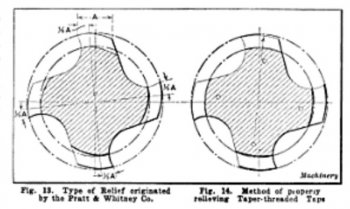J S Machine
Well-Known Member
I love Ti as a material for my knives but the stuff is very hard to work with. I have trouble drilling, sawing, and tapping it. I don't seem t have any problem cutting it in a mill with end mills though.
What I've come here to settle today is how I should be tapping it. I really need some help with this. As a tool maker, I have tapped literally thousands of holes in all types of material. In other words, I am not an inexperienced person..
However, Ti seems to break my taps with ridiculous frequency. I usually cannot get but two or three very small holes before the tap breaks. Something about Ti that I can't really explain..it's like it shrinks around the tap or something. Even though I'm using a brand new tap, and a few different kinds of cutting oil, I still get unreal friction. It feels like I'm tapping a hole that is drilled under the tap drill size called for, but in reality I drill it bigger just to avoid this symptom. It still feels tight.
I always use good name brand taps. I try to stay away from the cheap Chinese junk.
A look at the tap chart says a 2-56 tap needs a #51 drill, which measures .067". I will step up to something like a #50 or even a #49, and I still get a really tight binding.
I posted this on Facebook last night and David Curtiss said he uses forming taps, not cutting taps. Is this the secret?
I need info ASAP. As usual, I'm stuck because I am right in the middle of making St. Jude knives for auction, and they have to be done by 8/1. I broke the last $35 2-56 tap I had last night on the second hole of .048" thick liner material. This is being done in a mill or drill press with dialed in tables..so the tap is straight. It is also being done by hand..not under machine power.
I need recommendations so I can get something ordered right away. Hopefully I'll get it within the week.
Thanks
What I've come here to settle today is how I should be tapping it. I really need some help with this. As a tool maker, I have tapped literally thousands of holes in all types of material. In other words, I am not an inexperienced person..
However, Ti seems to break my taps with ridiculous frequency. I usually cannot get but two or three very small holes before the tap breaks. Something about Ti that I can't really explain..it's like it shrinks around the tap or something. Even though I'm using a brand new tap, and a few different kinds of cutting oil, I still get unreal friction. It feels like I'm tapping a hole that is drilled under the tap drill size called for, but in reality I drill it bigger just to avoid this symptom. It still feels tight.
I always use good name brand taps. I try to stay away from the cheap Chinese junk.
A look at the tap chart says a 2-56 tap needs a #51 drill, which measures .067". I will step up to something like a #50 or even a #49, and I still get a really tight binding.
I posted this on Facebook last night and David Curtiss said he uses forming taps, not cutting taps. Is this the secret?
I need info ASAP. As usual, I'm stuck because I am right in the middle of making St. Jude knives for auction, and they have to be done by 8/1. I broke the last $35 2-56 tap I had last night on the second hole of .048" thick liner material. This is being done in a mill or drill press with dialed in tables..so the tap is straight. It is also being done by hand..not under machine power.
I need recommendations so I can get something ordered right away. Hopefully I'll get it within the week.
Thanks

